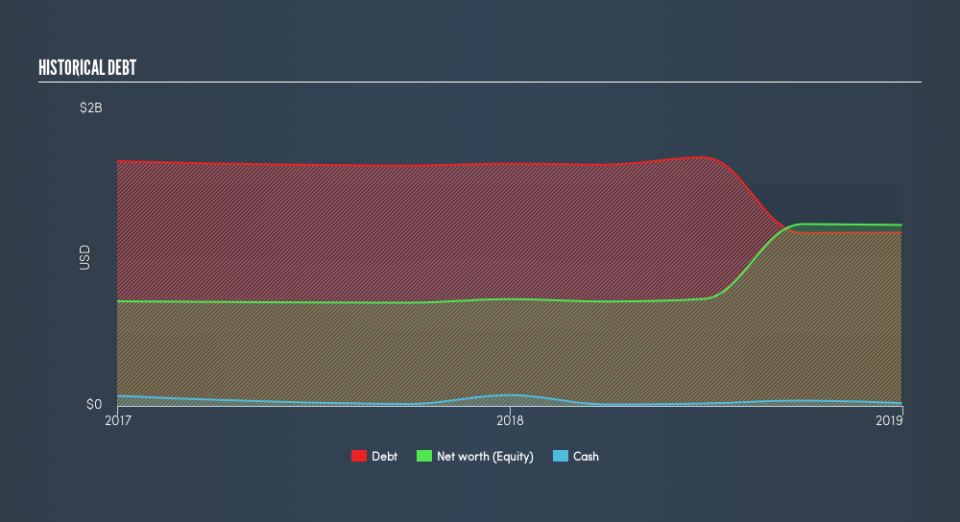How Financially Strong Is BrightView Holdings, Inc. (NYSE:BV)?

While small-cap stocks, such as BrightView Holdings, Inc. (NYSE:BV) with its market cap of US$1.6b, are popular for their explosive growth, investors should also be aware of their balance sheet to judge whether the company can survive a downturn. Given that BV is not presently profitable, it’s crucial to understand the current state of its operations and pathway to profitability. Let's work through some financial health checks you may wish to consider if you're interested in this stock. Nevertheless, this is not a comprehensive overview, so I recommend you dig deeper yourself into BV here.
BV’s Debt (And Cash Flows)
Over the past year, BV has reduced its debt from US$1.6b to US$1.2b , which includes long-term debt. With this debt payback, BV currently has US$18m remaining in cash and short-term investments , ready to be used for running the business. Moreover, BV has generated US$104m in operating cash flow in the last twelve months, resulting in an operating cash to total debt ratio of 8.9%, indicating that BV’s current level of operating cash is not high enough to cover debt.
Does BV’s liquid assets cover its short-term commitments?
At the current liabilities level of US$298m, the company has maintained a safe level of current assets to meet its obligations, with the current ratio last standing at 1.65x. The current ratio is the number you get when you divide current assets by current liabilities. Generally, for Commercial Services companies, this is a reasonable ratio as there's enough of a cash buffer without holding too much capital in low return investments.
Is BV’s debt level acceptable?
BV is a relatively highly levered company with a debt-to-equity of 96%. This is a bit unusual for a small-cap stock, since they generally have a harder time borrowing than large more established companies. But since BV is presently unprofitable, sustainability of its current state of operations becomes a concern. Maintaining a high level of debt, while revenues are still below costs, can be dangerous as liquidity tends to dry up in unexpected downturns.
Next Steps:
BV’s high cash coverage means that, although its debt levels are high, the company is able to utilise its borrowings efficiently in order to generate cash flow. This may mean this is an optimal capital structure for the business, given that it is also meeting its short-term commitment. I admit this is a fairly basic analysis for BV's financial health. Other important fundamentals need to be considered alongside. You should continue to research BrightView Holdings to get a better picture of the small-cap by looking at:
Future Outlook: What are well-informed industry analysts predicting for BV’s future growth? Take a look at our free research report of analyst consensus for BV’s outlook.
Valuation: What is BV worth today? Is the stock undervalued, even when its growth outlook is factored into its intrinsic value? The intrinsic value infographic in our free research report helps visualize whether BV is currently mispriced by the market.
Other High-Performing Stocks: Are there other stocks that provide better prospects with proven track records? Explore our free list of these great stocks here.
We aim to bring you long-term focused research analysis driven by fundamental data. Note that our analysis may not factor in the latest price-sensitive company announcements or qualitative material.
If you spot an error that warrants correction, please contact the editor at editorial-team@simplywallst.com. This article by Simply Wall St is general in nature. It does not constitute a recommendation to buy or sell any stock, and does not take account of your objectives, or your financial situation. Simply Wall St has no position in the stocks mentioned. Thank you for reading.

